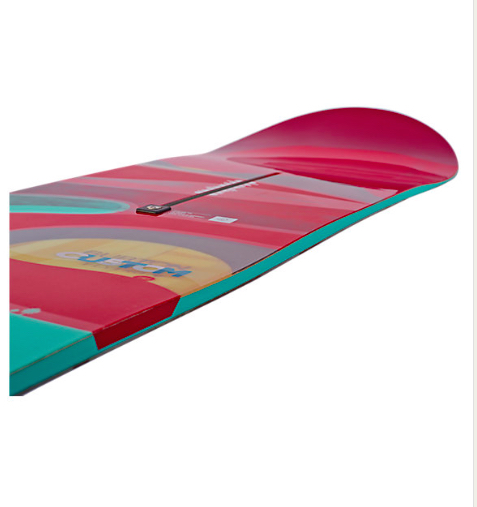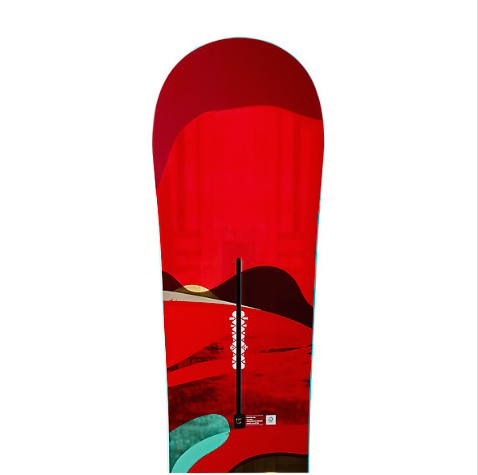Looking for the best all-around snowboard for the Midwest? Point your eyeballs in the direction of the Burton Custom Flying V and be prepared to rock out harder than ZZ Topp the next time you shred.

Shred the mountain in your own epic solo on the Burton Custom Flying V
For those of you not in the habit of following the trends in snowboard design you’d be forgiven for feeling slightly overwhelmed when confronted with the dizzying list of technology packed onto a snowboard nowadays: Dualzone EDG? Pro-Tip? Frostbite Edges? But don’t worry, we’re going to break it all down and see what’s behind the buzzwords.
Let’s start at the beginning: the name. Flying V comes from the fact that when viewed on edge, this board has a subtle but distinct shape to it; from the middle out the tips the board forms a “vee” shape. It’s actually closer to a “W” but Flying W? nah… This vee shape is actually a combination of “rocker” and “camber” which describe the shape of the board. “Rocker” bends the board up, like the curved rocker on your grandma’s rocking chair; a “rocker” board is going to float over the snow and have a fun ride but not a lot of speed, while “camber” bends the board in the opposite direction, almost like the shape of a bow, and the ride is almost opposite as well, lots of grip and speed but also harder riding.

That wave in the bottom of the board is where the magic happens.
By utilizing aspects of both “rocker” and “camber”, Burton is able to give the board plenty of float and the ability to cruise while also giving it responsive turning and the ability to carve with control. Add to that the fact that the board is symmetrical and you get a board that’s as home in the half-pipe as it is on the slopes.
The wood and composite cores of snowboards has undergone a huge leap in technology with companies using different types of wood in specific parts of the board to gain qualities. The Custom Flying V uses strips of wood along the nose and tail running in the opposite direction of the main board to add responsiveness and strength with a technology they call Dualzone EDG. Additionally, Burton layers carbon fiber throughout the board to increase responsiveness and cut weight.

Under the transparent red layer you can see the orientation of the wood, all designed to give you maximum control.
Like many sports, improving speed is all about shaving weight and increasing control and Burton does that through thinning out the tip and tail, called Pro-Tip; this also reduces swing weight if your so inclined to uncork some rotations. Finally, control is improved through the use of Frostbite – essentially tuning the metal edges of the board to improve its “bite” against icy conditions and turning. This combination of design and materials allows for todays boards to have nicer ride qualities and more durability than ever before. Wrapping the whole package in killer graphics never hurts either! Stop by your local ERIK’S and check out a Burton Custom Flying V today!



















